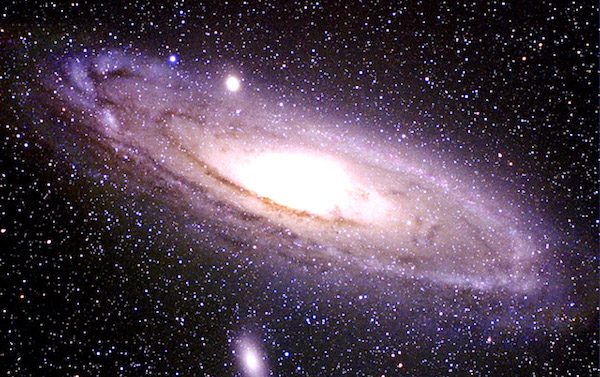‘Wasteful’ Galaxies Eject Elements Into Space From Exploding Black Holes

Galaxies “waste” are large amounts of heavy elements that get ejected from black holes, according to a new study led by the University of Colorado Boulder. The elements are generated by star formation by sending them up to a million light years away into deep space.
The research, which was recently published online in the Monthly Notices of the Royal Astronomical Society, shows that more oxygen, carbon and iron atoms exist in the sprawling, gaseous halos outside of galaxies than exist within the galaxies themselves, leaving the galaxies with fewer raw materials needed to build stars, planets, and life itself.
“Previously, we thought that these heavier elements would be recycled in to future generations of stars and contribute to forming planetary systems and providing the building blocks of life,” said Benjamin Oppenheimer, a research associate in the Center for Astrophysics & Space Astronomy (CASA) at CU-Boulder and lead author of the study. “As it turns out, galaxies aren’t very good at recycling.”
The near-invisible reservoir of gas that surrounds a galaxy, known as the circumgalactic medium (CGM), is thought to play a central role in cycling elements in and out of the galaxy, but the exact mechanisms of this relationship remain elusive. A typical galaxy ranges in size from 30,000 to 100,000 light years while the CGM can span up to a million light years.
The researchers used data from the Cosmic Origin Spectrograph (COS), a $70 million instrument designed at CU-Boulder and built by Boulder, Colorado-based Ball Aerospace Technology Corp., to study the composition of the CGM.
COS is installed on NASA’s Hubble Space Telescope and uses ultraviolet spectroscopy to study the evolution of the universe.
NASA said spiral wasteful galaxies like the Milky Way actively form stars and have a blueish color while elliptical galaxies have little star formation and appear red. Both types of galaxies contain tens to hundreds of billions of stars that create heavy elements.
After running a series of simulations, the researchers found that the CGMs in both types of galaxies contained more than half of a galaxy’s heavier elements, suggesting that galaxies are not as efficient at retaining their raw materials as previously thought.
“The remarkable similarity of the galaxies in our simulations to those targeted by the COS team enables us to interpret the observations with greater confidence,” said Robert Crain, a Royal Society University Research Fellow at Liverpool John Moores University and a co-author of the study.
The new simulations also explain the puzzling COS observation that there appears to be less oxygen around elliptical than spiral galaxies.
“The CGM of the elliptical galaxies is hotter,” said Joop Schaye, a professor at Leiden University in the Netherlands and a co-author of the study. “The high temperatures, topping over one million degrees Kelvin, reduce the fraction of the oxygen that is five times ionized, which is the ion observed by COS.”
By contrast, the temperature of the CGM gas in spiral galaxies is 300,000 degrees Kelvin, or around fifty times hotter than the surface of the Sun. Oppenheimer said that it takes massive amounts of energy from wasteful galaxies to send these heavy elements, much of which are from exploding supernovae and supermassive black holes.
 By:
By: 